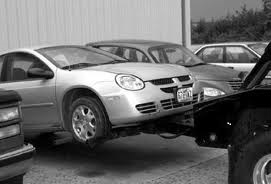
Guest Editorial
Recently a good client of mine called me to discuss a new standardized fee schedule they were putting together for the Texas area. The following is a letter I wrote in response to help explain how we got to the current price structure in the industry today. I thought it might be interesting to those newer to the industry.
“I want to thank you for reaching out to me and other repossession agents regarding setting up a standardized pricing structure in Texas. I wanted to give a brief explanation and history of repossession fees to give you a better understanding of how current pricing structures came about and how this has affected the repossession industry. I’ve been in this industry since 1975 so I do have some experience in this.
“Before the auto auctions decided to get into the repossession business (by forming forwarding companies), repossession rates were  established by the repossession companies and the market place. At this time repossession companies charged for repossession, storage, keys, skip tracing, delivery, mileage for out of town accounts and close fees. When the auto auctions got into the business, in order to land the work from the large lenders, they promised a flat repossession fee and no close fees. To do this, they demanded much lower repossession fees from the repossession companies and no close fees. Many of these companies either lost a good percentage of their business or acquiesced to work for cut rates. And as the auctions set up their pricing to include the cost of storing vehicles they auctioned off, they also demanded free storage from repossession companies (which did not have the cost of the storage included in their repossession fees).
established by the repossession companies and the market place. At this time repossession companies charged for repossession, storage, keys, skip tracing, delivery, mileage for out of town accounts and close fees. When the auto auctions got into the business, in order to land the work from the large lenders, they promised a flat repossession fee and no close fees. To do this, they demanded much lower repossession fees from the repossession companies and no close fees. Many of these companies either lost a good percentage of their business or acquiesced to work for cut rates. And as the auctions set up their pricing to include the cost of storing vehicles they auctioned off, they also demanded free storage from repossession companies (which did not have the cost of the storage included in their repossession fees).
“Other fees disappeared as well, making keys (as the auctions wanted to do that themselves), skip tracing (because they had promised flat rates to the lender) as well as mileage fees. This had some positive effects on the industry in that repossession companies had to learn to tighten their belts and eliminate waste. But it also resulted in companies having to cut corners, reduce quality of service or many companies simply went out of business.
“In order to still make a profit with all these reduced fees a new fee (at least one I had never heard of before this time) came into being called a “redemption fee.” This ranged from $75 – $150 and is charged to the debtor for redeeming their vehicle. Companies were also allowed to continue to charge storage to the debtors if they redeemed because this didn’t affect the flat rate promised by the forwarding companies for the repossession. Being able to charge these fees was an effort to try to make a profit from a repossession fee that, in itself, often resulted in a net loss.
“Now some lenders are saying, ‘we don’t want our customers to have to pay storage when they redeem their vehicles, after all we don’t pay storage and it’s hard for them to come up with that additional money.’ And some lenders are also saying companies can’t charge a redemption fee. In the meantime the cost of equipment, fuel, insurance, compliance, property taxes, and on and on, all continue to rise.
 “Repossession rates have been artificially pushed down by forwarders and large lenders demanding fees which can not sustain a company that provides quality service, maintains proper insurance, bonding, training, equipment, compliance standards and so on. To make up for all the lost revenue, repossessors have had to either take short cuts, charge additional fees (like redemption fees, personal property fees, and higher storage rates for debtors) or find other ways to add to their revenue on each car such as providing on-line or local auction services themselves.”
“Repossession rates have been artificially pushed down by forwarders and large lenders demanding fees which can not sustain a company that provides quality service, maintains proper insurance, bonding, training, equipment, compliance standards and so on. To make up for all the lost revenue, repossessors have had to either take short cuts, charge additional fees (like redemption fees, personal property fees, and higher storage rates for debtors) or find other ways to add to their revenue on each car such as providing on-line or local auction services themselves.”
Repossession fees have been cut and cut to the point it is getting dangerous. It’s been shown time and time again, when you read these stories about repossessions gone bad, they happened when you have untrained people out there picking up cars and/or they are under undue stress to repossess that car because if they don’t, they don’t get paid—their family doesn’t eat. If you cut back fees too far, it becomes impossible for companies to do it right. Perhaps instead of trying to find more ways to save the consumer money, maybe it’s time to start to find ways to make the consumer and general public more safe by paying a higher repossession fee that allows for companies to run their businesses right and to make their repossessions safe.
Russ DeWitt
President,Capital Adjusters, Inc.
Past President, National Finance Adjusters
Member:
American Recovery Association
California Assn of Licensed Repossessors
Certified Asset Recovery Specialist
Certified Recovery Agent
Send any comments to: newsletter@repoaustin.com
______________________________________________________________
Phone: 512-5-836-8030 Fax: 512-836-5379 Website: www.repoaustin.com
PO Box 140111, Austin, TX 78714












Thanks Russ, your article is an important message that can’t be over sold. We need to keep this effort alive and find a way to get the CORP take this issue on, like no kidding!!!